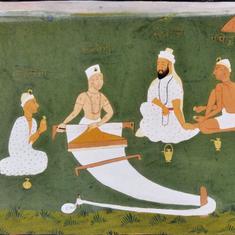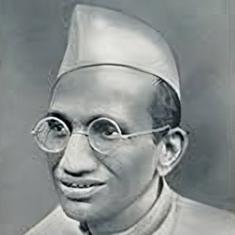Over the past few decades, the monsoons have provided opportunities for Hindustani music lovers to drench themselves in the strains of various Malhars, a group of raags prescribed for this season. Malhar utsavs or festivals of music dedicated expressly to these raags are organised every year. Needless to say, Mia ki Malhar is one of the most popular raags at such events. Last week’s episode carried a discussion on eminent vocalist Amir Khan’s extensive exploration of Mia ki Malhar.
Today, we feature a rendition of Gaud Malhar by Agra gharana maestro Faiyaz Khan (1881-1950).
The first track has an aalaap or introduction to Gaud Malhar. Faiyaz Khan’s deep and sonorous voice makes broad strokes across the gamut, sweeping through the key phrases of the raag while moving on to the pulse-driven jod section very early into the aalaap. He also fleetingly uses sargam or solfège in this part. He uses the vowel “ee” to heighten the potency of the upper tonic. Moving to double tempo, he employs gamaks or rapid oscillations on notes and increases the rhythmic intensity of the melodic phrasing.
The maestro chooses to continue his rendition with a famous composition, a creation of the 18th-century composer Niamat Khan Sadarang. The composition is sung by vocalists across gharanas, but in different taals. Faiyaz Khan chooses to sing it in Teentaal, a cycle of 16 matras or time-units.
The second track seems to be a continuation of the earlier Gaud Malhar rendition. In this segment, Faiyaz Khan employs bol baant or variations in the scansion of the song-text across the metrical format of the taal.
The next composition is a drut or fast-paced one. In his inimitable style, Faiyaz Khan uses the second line of the sthayi or the first part of the composition as a refrain to launch into different melodic explorations. He then returns to the first line and sings a variety of robust taans or swift passages, at times breaking into free-flowing melodic elaboration.










